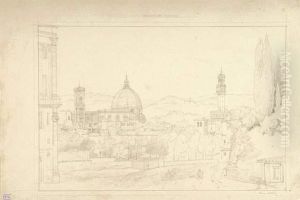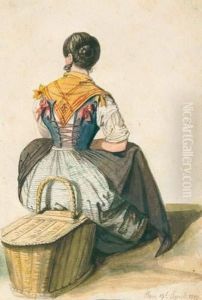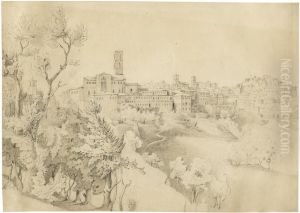Friedrich Eisenlohr Paintings
Friedrich Eisenlohr was a German architect and painter, born in 1805 in Lörrach, a town in the Grand Duchy of Baden (now part of the modern-day state of Baden-Württemberg, Germany). His father was also an architect, which likely influenced Eisenlohr's early interest in the field. Eisenlohr attended the Polytechnic School in Karlsruhe, where he honed his skills and gained a deep understanding of architectural principles. In addition to his architectural endeavors, he was also skilled in painting, which supplemented his architectural work and provided a broader artistic foundation.
Eisenlohr's work as an architect was distinguished by a combination of practicality and aesthetic appeal, and he often incorporated elements of classical architecture into his designs. He is best known for his contribution to the 19th-century railway architecture in Germany. His most famous work is the design of the Baden Black Forest Railway, and especially the iconic series of railway stations along this line. These buildings were highly functional while also serving as picturesque landmarks that harmoniously blended with the scenic landscapes of the Black Forest region.
Despite his successful career, Friedrich Eisenlohr’s life was relatively short. He died in 1854 at the age of 49. His legacy, however, endures in the continued admiration of his architectural achievements, particularly in the field of railway station design, which set standards for subsequent generations. Eisenlohr's approach to integrating structure with environment remains influential and is often cited in discussions about sympathetic architectural design in historical contexts.


